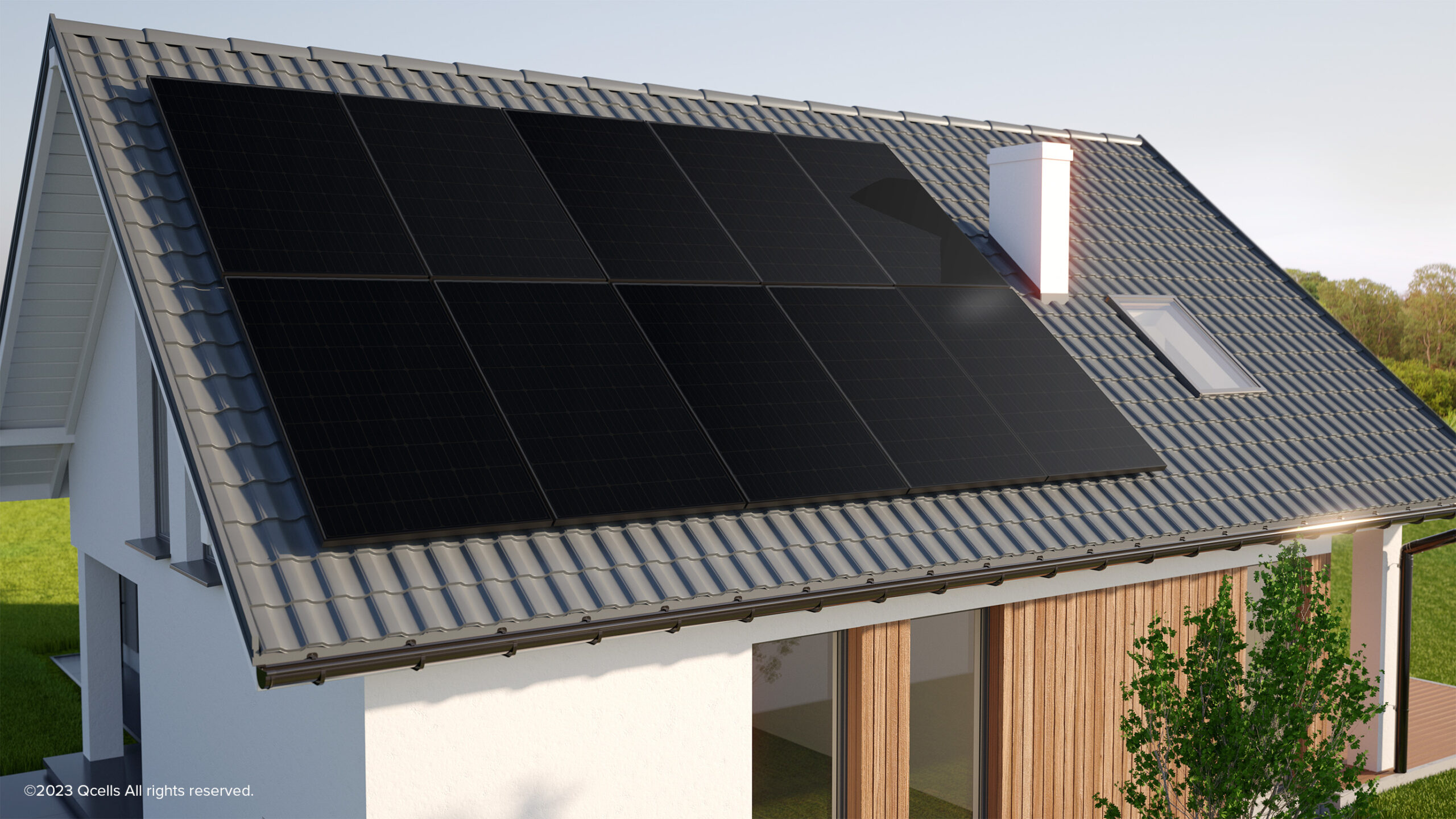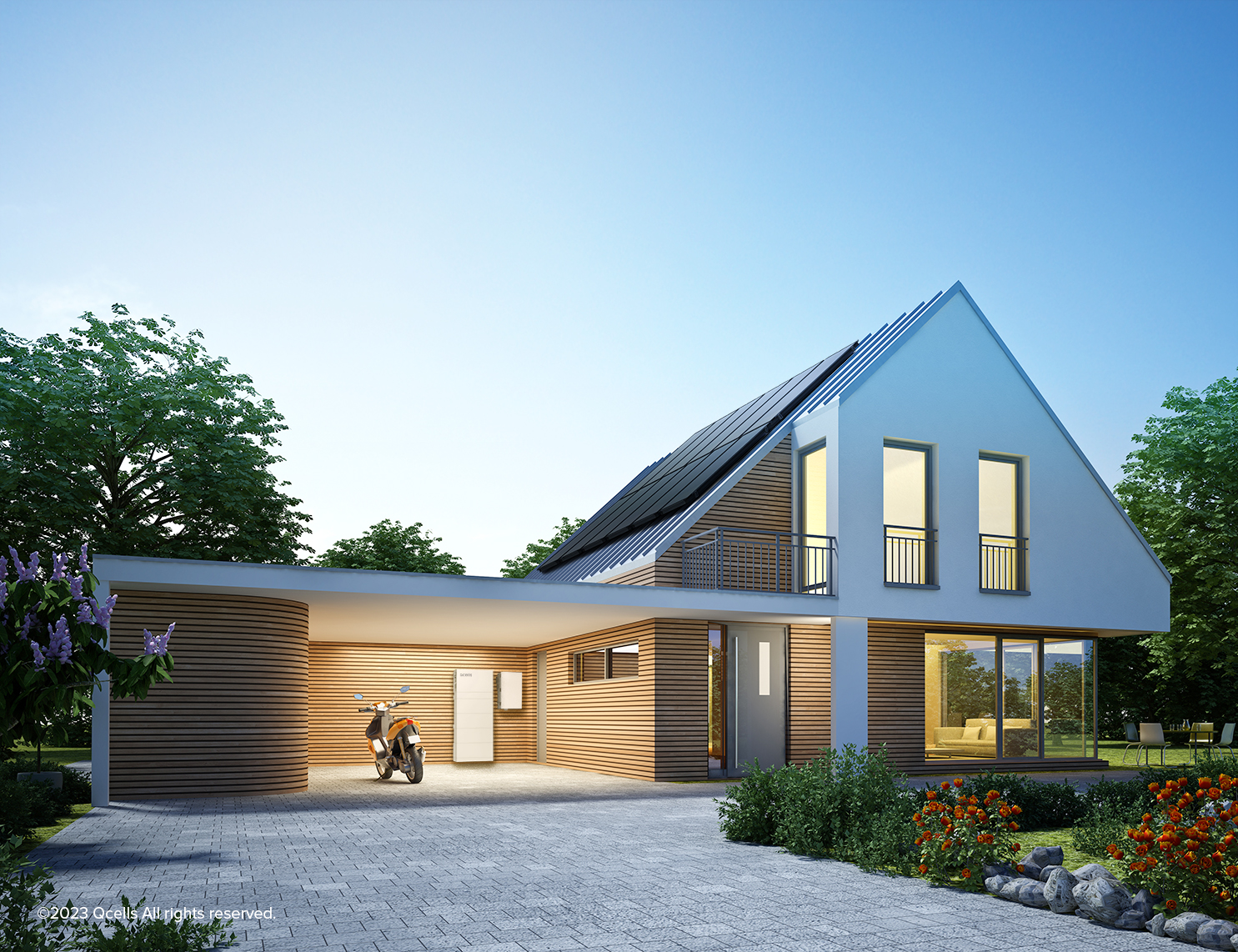When considering which solar panels to choose for your installation, solar panel size is something to bear in mind. Solar panels are available in a range of different sizes, and a solar panel’s size can play an important role in the overall energy output of your solar system.
Physically larger solar panels are usually higher in power, but much depends on the cell technology the panel contains. Because there is more than one way to measure the size of a solar panel – it could, for example, be measured in the power rating, with some solar panels having a higher power density than other, physically larger ones. Your ultimate consideration should be whether the solar panels provide the most efficient use of space, most cost-effectively, on your rooftop – for some buildings, this can mean more solar panels of smaller dimensions, and for others it can mean fewer solar panels of larger dimensions.
Solar Panel Dimensions
The options available for your rooftop solar system can be seen in solar panel dimensions. Leading solar module providers such as Qcells offer a selection of solar panels with differing dimensions; not all of which will be suitable for every household. Bigger is not always better – the goal of your solar system should be to squeeze out as much power as possible in the rooftop space available.
The average size of a typical residential solar system in the US is 6-8 kW, meaning that a typical home rooftop array for the home will optimally have 15 – 20 solar panels installed because, for example, Qcells offers residential solar panels with a power (Wp = Watt peak) output of between 370Wp ~ 430 Wp. However, the solar panel dimensions for the highest power class of solar modules can often be smaller than lower power modules due to the difference in cell technology that means fewer cells are required for more power. Your installation partner should explain this further during the consultation process.
Common Residential Solar Panel Sizes
The factors that determine the most common residential solar panel sizes are number of solar cells, size of solar cells, and type of solar cells. The most common solar cell size is 152-by-152mm (6-by-6 inches), but in the past few years new technologies have led to larger cell sizes, which means higher power but also, potentially, larger solar panel sizes.
Most solar panels contain either 60 solar cells or 72 solar cells (usually cut in half so are then labelled as 120-half cell and 144-half cell, respectively). Solar panels with 60 cells are smaller and usually have a power rating of up to 300 Wp whereas solar panels with 72 cells can produce a power output of more than 400 Wp.
When comprised of the most common solar cell technology (so-called PERC technology) solar modules capable of producing around 400 Wp typically measure around 1.9 meters (74 inches) in height and 1 meter (39 inches) wide. Standard residential solar panels generally contain fewer cells (60 as opposed to 72, for example) and will tend to be the same width and depth as modules with more cells, albeit shorter in length – usually around 1.65 meters, or 65 inches.
Commercial and Utility-Scale Solar Panel Sizes
Because the rooftops of small businesses and commercial customers tend to be larger than a typical household, commercial and utility-scales solar panel sizes are also larger than panels manufactured for residential purposes.
Larger solar panels can capture more sunlight and therefore provide more solar energy – typically matching or exceeding the increased energy needs of a business premises. Therefore, commercial and utility-scale solar panels have a higher wattage than standard residential solar panels, often reaching the 500-600 Wp range. To achieve this higher power output, commercial and utility-scale solar panels contain a higher number of solar cells, often as many as 96 cells (or 192-half cells). As a result, these solar panels weigh more, and thus require at least two trained installers to handle them at all times during the installation process.
Qcells offers a broad range of commercial and utility-scale solar panels that range from 490 Wp ~ 635 Wp. Visit our Solar Panel product page to learn more.
Factors Affecting Solar Panel Size Selection
Bigger is not always better where solar panels are concerned. There are a number of factors affecting solar panel size selection that need to be taken into account when planning a rooftop solar installation.
Firstly, consider the solar panel structure. This means the actual dimensions of the solar panel, the type of cell technology contained within, and the composition of those solar cells – are they bifacial, for example? (ability to generate solar electricity on both sides of the cell)
Secondly, one must consider the roof space they have available. Are parts of it shaded? Is the roof irregularly shaped in one corner? Is it south-facing, or does it face across both east and west?
Thirdly, what are your likely energy demands? Do you need to cover your entire roof, or will a lower number of larger panels in the middle of the roof sufficiently generate enough solar power to meet your consumption requirements? These are all considerations to weigh up when choosing the size of your solar panels.
1. Available Roof or Installation Space
In consultation with a trained installer, those looking to install a solar system on their rooftop should calculate the available roof or installation space, and assess the most optimal system based on this data.
This calculation should take into account the combined weight of the solar panels and all other additional components required, such as cabling and mounting system. Which is why it pays to know what size solar panels – and how much they weigh – are available during the rooftop planning stage.
Typically, if a 6 kW solar system is comprised of 20 around solar panels, the combined weight of just the panels can be around 800 pounds (with a typical solar panel weighing approx. 40 lbs). An installer can then calculate the square feet required to accommodate 20 solar panels which, based on average dimensions, equates to 352 square feet. Now, does this area exist easily on your rooftop, or would the installer have to find creative ways to fit all panels on the roof? Or, indeed, select some smaller solar panels in order to fit?
When adding in the consideration of additional rooftop components required – such as cabling and mounting hardware – a solar array on a rooftop can weigh about 3-4 lbs per square foot. A reputable installation company will be able to take care of all of these considerations before offering a quote.
2. Power Output Requirements
When determining what size your solar panels should be, and how many you should install, you should first assess your power output requirements. To do this, simply know your monthly and annual energy consumption, and consult with your installer about the best way to meet this consumption with as few solar panels as possible, factoring in your available roofspace and budget. A reputable installer should typically ask to review previous energy bills in order to more accurately plan the system size.
3. Efficiency and Technology
Side by side, two solar panels with the same solar panel dimensions do not necessarily provide the same power output. What also matters is the technology contained within the panel, including the type of cells used, the interconnection method between the cells, and the presence (or lack) of additional power optimization technology, such as a microinverter that can boost power conversion at the module level to deliver greater wattage to the customers.
Qcells solar modules are renowned in the industry for their high efficiency and long-term durability. The Qcells Q.TRON range uses industry-leading Q.ANTUM NEO technology and half-cut cells to deliver efficiencies of up to 22% and over 90% of nominal power over 25 years.
4. Geographic Location and Sunlight Availability
It is always worth considering the geographic location and sunlight availability of your premises when selection solar panels. Sunnier regions have longer peak hours of sunlight, obviously, and so any calculation on the size of your solar system should take this into account. For an optimal balance between performance and cost, a solar system should be sized to generate just the right amount of energy for your needs. Of course, any excess energy generated can be either stored with a home battery system or fed into the grid (for which the producer can receive credits depending on where they live), but many customers may wish to generate exactly enough to meet their own consumption needs.
Households or business premises that do not consume all of the solar energy their system produces may be able to take advantage of certain incentives. This requires understanding Feed-in Tariffs or Net Metering – both of which reward solar generators for their solar energy production, providing credits (net metering) or compensation (feed-in tariff) for the excess electricity fed into the grid. If a solar array has a battery system installed, excess energy can also be stored for use at a later time.
How Many Solar Panels Do I Need for My Home?
To find out how many solar panels you need for your home, arrange a free consultation with Qcells. Wondering how many solar panels is enough for a home is perhaps the most commonly-asked question homeowners raise when choosing to install a solar system.
However, there are simple calculations you can make on your own. The first step is to record your annual energy consumption in kilowatt hours (kWh) and divide that figure by the average electricity produced per solar panel selected (kWh). This can vary depending on location, so it also pays to know the solar irradiation your rooftop receives per year.
Conclusion
There is a wide range of different solar panel sizes on the market. A number of variables come into play when calculating the right sized solar panels for your rooftop. An experienced solar installer can take care of this process, and Qcells can recommend trusted partners to walk you through the various steps – ensuring peace of mind that your solar solution is the most efficient and cost-effective available.
Contact Us
If you are interested in installing Qcells solar panels on your home or have questions about solar energy, our team is here to help. We are dedicated to developing high-quality solar panels, providing outstanding solar solutions, and delivering exceptional customer service because we understand the importance of switching to clean energy and how it can positively impact the environment.
Feel free to browse our complete solar energy solutions, including solar panels, home energy storage, and energy management, or contact us to discuss designing and installing a customized home solar panel system. You can also contact Qcells for any solar questions you may have.





 USA & Canada
USA & Canada Korea
Korea Germany
Germany United Kingdom
United Kingdom France
France Italy
Italy Netherlands
Netherlands Greece
Greece Poland
Poland Portugal
Portugal Hungary
Hungary Spain
Spain Australia
Australia Japan
Japan